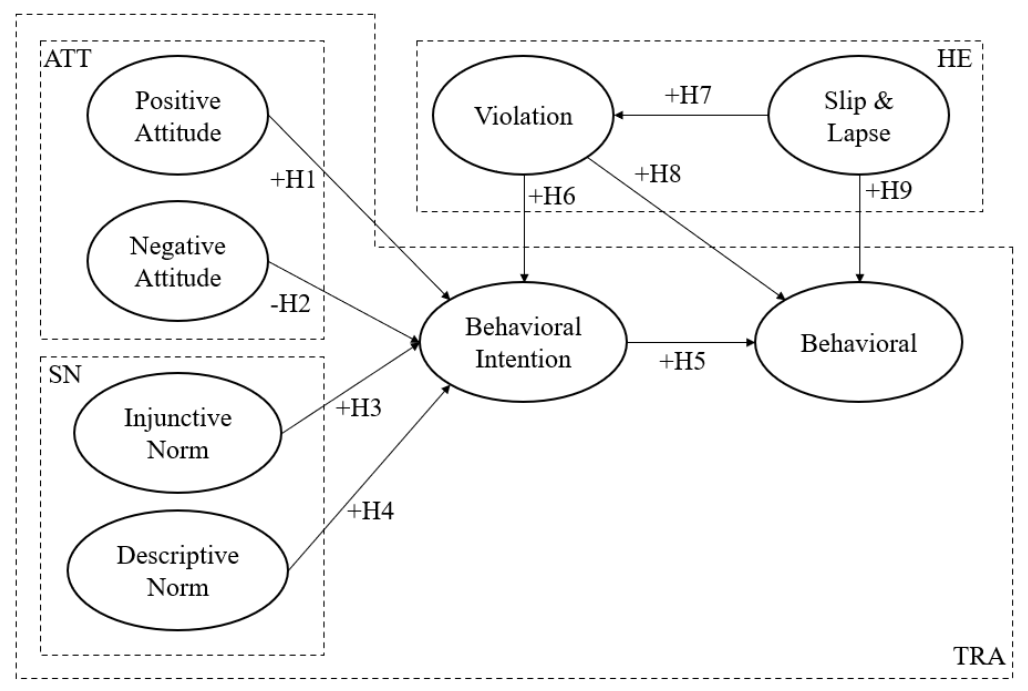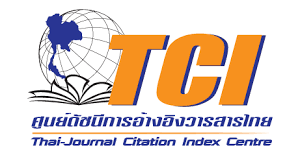Red Light Running Behavior of Motorcyclists on Urban Roads: Psychological Factors and Risk Perception
Keywords:
driver behavior, road safety, severe accident, unsafe actionAbstract
Red light running (RLR) constitutes a significant road safety challenge encountered by numerous countries. Especially among motorcyclists, this behavior leads to severe accidents, serious injuries, and death. Hence, awareness of potential hazards and adherence to driving safety are significant. This research aims to study the risk perceptions and explain the psychological factors associated with rider's RLR behavior. The questionnaires (N=250), approved by the ethics committee for human research (No. HE613041), will be utilized to gather data on rider behaviors in Khon Kaen City. Psychological factors related to RLR behavior will be explained through the Theory of Reasoned Action (TRA) and Human Error (HE) by utilizing the Structural Equation Model (SEM). The results indicated that the overall model could explain about 36% of the variance of rider’s behavior at a 95% confidence level. The outcomes can serve as an initial guideline for defining necessary traffic safety strategies to reduce serious injuries of motorcyclists in Khon Kaen City.
References
World Health Organization, “Global Status Report on Road Safety 2015”, World Health Organization, 2015.
B. Palat and P. Delhomme, “What factors can predict why drivers go through yellow traffic lights? An approach based on an extended theory of planned behavior,” Safety science, vol.50, no. 3, pp. 408-417, 2012.
P. Jantosut, W. Satiennam, T. Satiennam, and S. Jaensirisak, “Behavioral Characteristics and Factors Associated to Red Light Running of Passenger Car Drivers in Khon Kaen City,” KKU Research Journal (Graduate Studies), vol. 21, no. 1, pp. 26-37, 2021a.
P. Jantosut, W. Satiennam, T. Satiennam, and S. Jaensirisak, “Factors associated with the red-light running behavior characteristics of motorcyclists,” IATSS research, vol. 45, no. 2, pp. 251-257, 2021b.
A. Jensupakarn and K. Kanitpong, “Influences of motorcycle rider and driver characteristics and road environment on red light running behavior at signalized intersections,” Accident Analysis & Prevention, vol. 113, pp. 317-324, 2018.
W. Satiennam, T. Satiennam, T. Triyabutra and W. Rujopakarn, “Red light running by young motorcyclists: Factors and beliefs influencing intentions and behavior,” Transportation research part F: traffic psychology and behavior, vol. 55, pp. 234-245, 2018.
C. W. Pai and R. C. Jou, “Cyclists’ red-light running behaviors: An examination of risk-taking, opportunistic, and law-obeying behaviors,” Accident Analysis & Prevention, vol. 62, pp. 191-198, 2014.
F. Fraboni, V.M. Puchades, M. De Angelis, L. Pietrantoni, and G. Prati, “Red-light running behavior of cyclists in Italy: An observational study,” Accident Analysis & Prevention, vol. 120, pp. 219-232, 2018.
Reason, J., Human error. Cambridge university press, 1990.
T. Lajunen, D. Parker, and H. Summala, “The Manchester driver behavior questionnaire: a cross-cultural study,” Accident Analysis & Prevention, vol. 36, no. 2, pp. 231-238, 2004.
A.M. Elliott, J.C. Baughan, and F.B. Sexton, “Errors and violation in relation to motorcyclists’ crash risk,” Accident Analysis & Prevention, vol. 39, pp. 491-499, 2007.
T. Ozkan, T. Lajunen, B. Dogruyol, Z. Yildirim, and A. Coymak, “Motorcycle accidents, rider behavior, and psychological models,” Accident Analysis & Prevention, vol. 49, pp. 124-132, 2012.
C. Sakashita, T. Senserrick, S. Lo, S. Boufous, L. de Rome, and R. Ivers, “The Motorcycle Rider Behavior Questionnaire: Psychometric properties and application amongst novice riders in Australia,” Transportation research part F: traffic psychology and behavior, vol. 22, pp. 126-139, 2014.
I. Ajzen and M. Fishbein, Understanding Attitudes and Predicting Social Behavior. Englewood Cliffs, NJ, 1980.
M. Fishbein and I. Ajzen, Predicting and changing behavior: the reasoned action approach. Taylor and Francis Group, New York, USA: Psychology Press, 2010.
P. Tankasem, T. Satiennam, and W. Satiennam, “Psychological Factors Influencing Speeding Intentions of Car Drivers and Motorcycle Riders in Urban Road Environments,” International Journal of Technology, vol. 7, no. 7, pp. 1179-1186, 2016.
J.F. Hair, W.C. Black, B.J. Babin, and R.E. Anderson, Multivariate Data. Analysis a global perspective 7th ed., New Jersey, 2010.
P. Tankasem, T. Satiennam, and W. Satiennam, “Cross-cultural differences in speeding intentions of drivers on urban road environments in Asian developing countries,” International Journal of Technology, vol. 7, no. 7, pp. 1187-1195, 2016.
T. Satiennam, N. Akapin, W. Satiennam, J. Kumphong, N. Kronprasert, and V. Ratanavaraha, “Wrong way driving intention and behavior of young motorcycle riders,” Transportation research interdisciplinary perspectives, vol. 19, 2023.
J. Reason, A. Manstead, S. Stradling, J. Baxter, and K. Campbell, “Errors and violations on the roads: a real distinction?,” Ergonomics, vol. 33, no. 10-11, pp. 1315-1332, 1990.

Downloads
Published
How to Cite
Issue
Section
License

This work is licensed under a Creative Commons Attribution-NonCommercial-NoDerivatives 4.0 International License.








